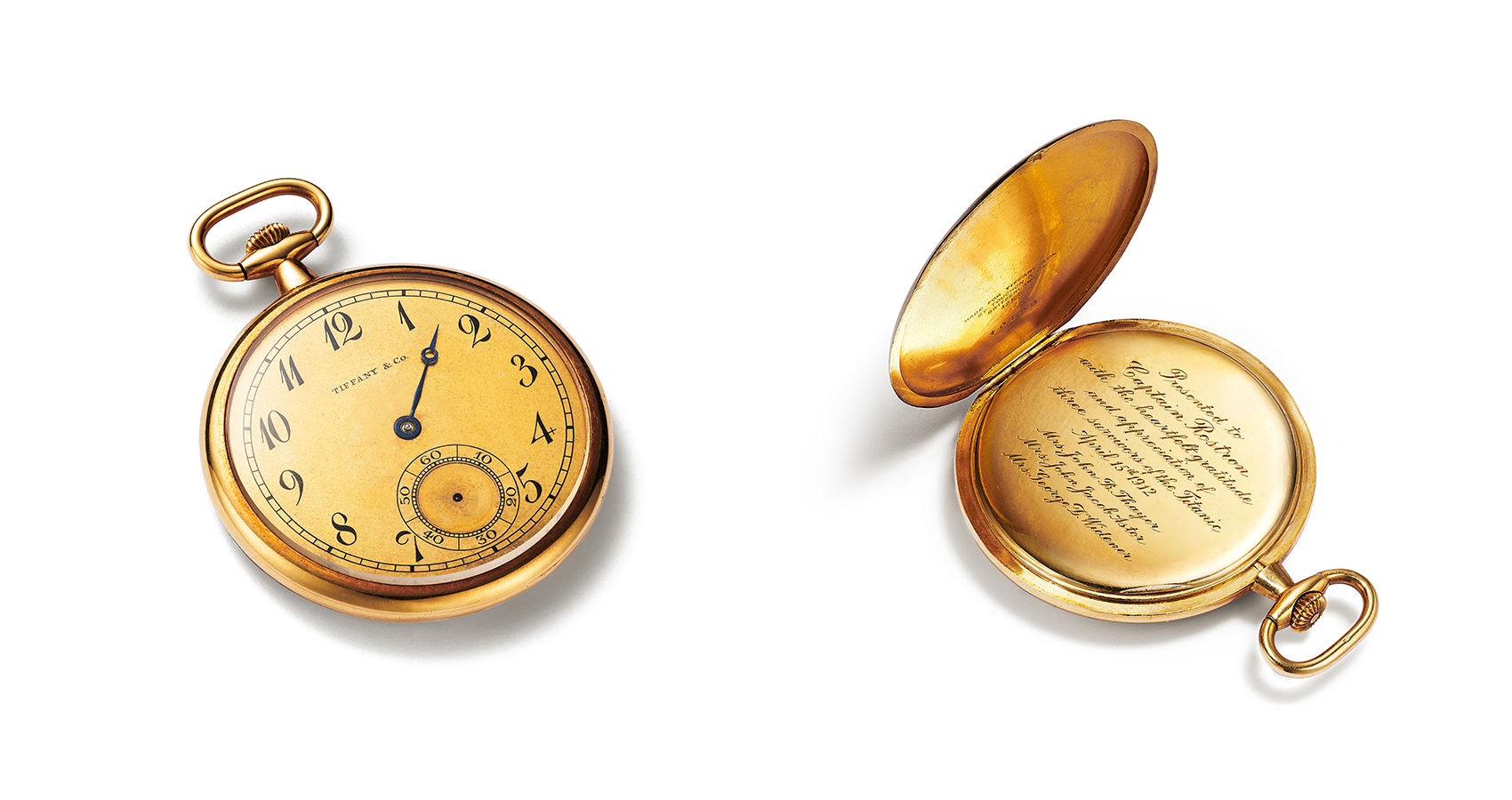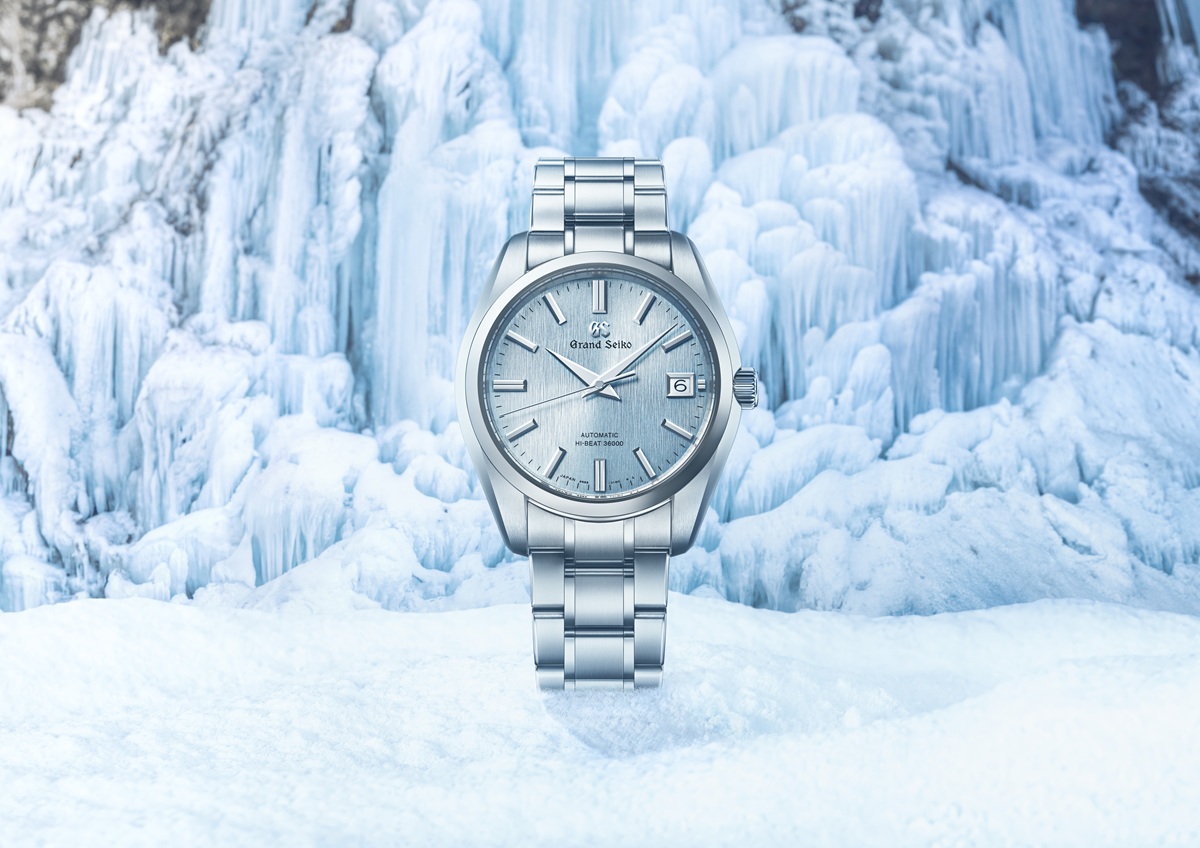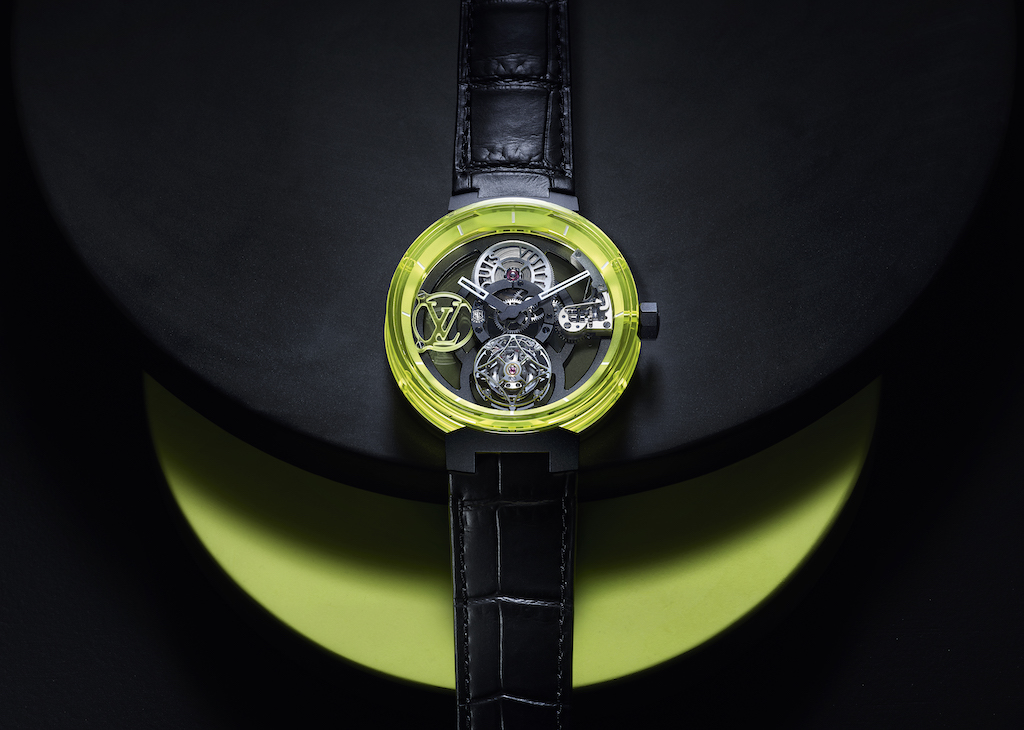
Louis Vuitton Presents the Tambour Moon Flying Tourbillon “Poinçon de Genève”
Louis Vuitton’s Tambour Moon Flying Tourbillon “Poinçon de Genève” serves as a testament to the Maison’s craftsmanship.

Photo Credit: Louis Vuitton
The first watch collection with a sapphire case to bear Geneva Seal gets expanded with two new timepieces.
The two new Tambour Moon Flying Tourbillon “Poinçon de Genève” watches are crafted from single blocks of synthetic sapphire, and will come in fluorescent green or yellow cases. This pure and precious mineral is obtained by heating aluminum oxide at temperatures of around 2000° Celsius. Ever since the early 20th century, when this manufacturing process was invented by French chemist Auguste Victor Louis Verneuil (1856-1913), the watch industry has been using it to produce rubies for mechanical movements.
Virtually unalterable like pure gold or platinum, with a hardness only surpassed by diamonds, synthetic sapphire is one of those precious materials over which time has no control. La Fabrique du Temps Louis Vuitton immediately grasped its potential, using it to protect the LV90 caliber from external stresses.
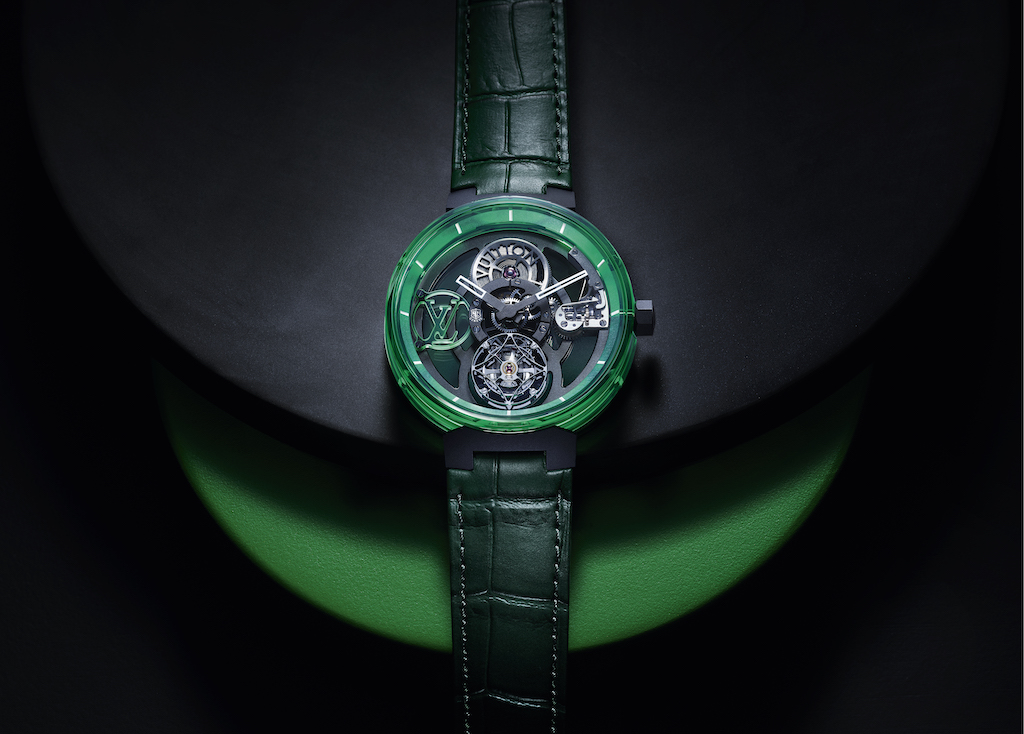
It provides an impenetrable barrier to all but the eye and ensures that the exceptional openwork movement, regulated by a flying tourbillon, will have a virtually unlimited life span, provided that it receives regular care. The Manufacture’s engineers have been experts in its application ever since the launch of the Tambour Moon Flying Tourbillon “Poinçon de Genève” watches in clear, blue and pink sapphire. This year, these artists, a bit of alchemists, have found the right formulas and the purest metal oxides in secretly guarded proportions.
They have created two new exceptional pieces with daringly translucent shades, so intense that they give the impression of being fluorescent. The first features an electric yellow sapphire case and the second comes in warm green accents.
To obtain a case middle, a case-back and a bridge bearing the LV logo in a strictly identical color for each watch, a cylinder, 50 mm in diameter and 150 mm long, had to be extracted from the center of a block of mass-tinted sapphire from Japan weighing nearly 200 kg. Each component is therefore cut from this sapphire crystal bar using diamond tools to obtain the pieces final dimensions. All the elements are then delicately polished to reveal their transparency and the richness of the two meticulously selected colors.
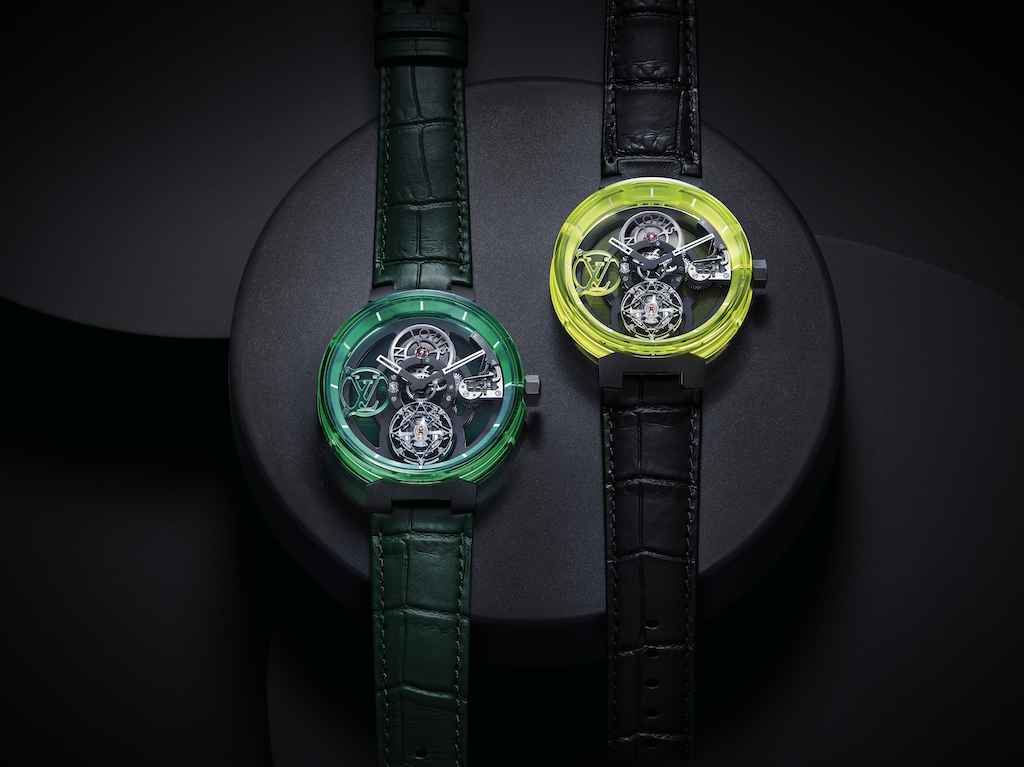
The entire synthetic sapphire case of each watch requires 420 hours of complex operations on digitally controlled machines working with diamond tools. The 10 mm thick monobloc part alone, comprising the case middle, the bezel and the glass, requires 100 hours of milling and 150 hours of polishing. The case back needs 50 hours of machining and 60 hours of hand and machine finishing to become fully transparent and ready for assembly. Finally, the transparent bridge bearing the LV logo takes 20 hours of cutting and 40 hours of manual finishing to let the light pass through flawlessly.
Constant and meticulous attention is given to every detail throughout the entire manufacturing process. The 12 letters forming LOUIS VUITTON are engraved on the outer side of the concave case middle of the Tambour Moon, which appeared in 2017.
Like the indexes on the bezel flange, whose design gives the timepiece a very open face, they are delicately lacquered in white for the green sapphire version, and black for the yellow sapphire model.
The two horns, in black PVD-treated titanium, are attached by screws. Finally, to protect the delicate movement from external stresses, this 42.5 mm case with a thickness of 9.9 mm is guaranteed water- resistant up to 30 meters. This is achieved through a transparent gasket positioned between the case middle and the screw-down case back.
 SIGN UP
SIGN UP




